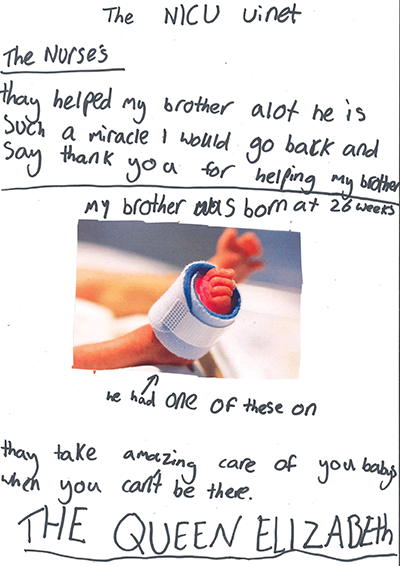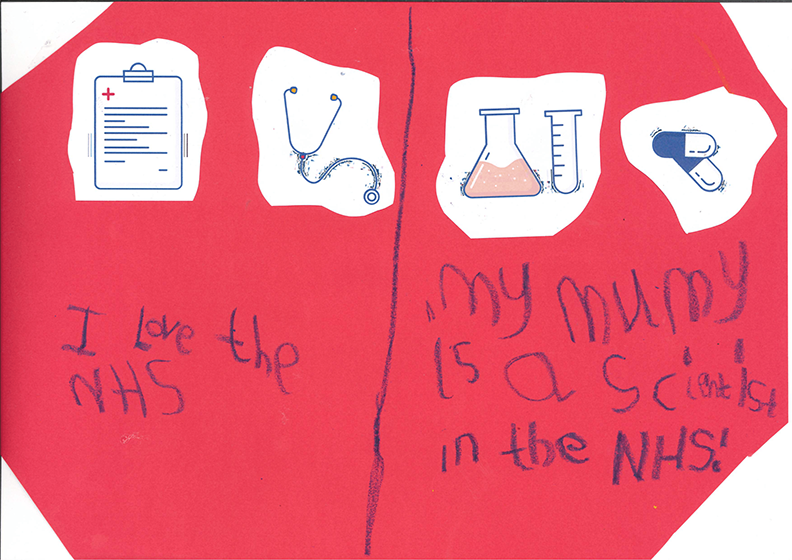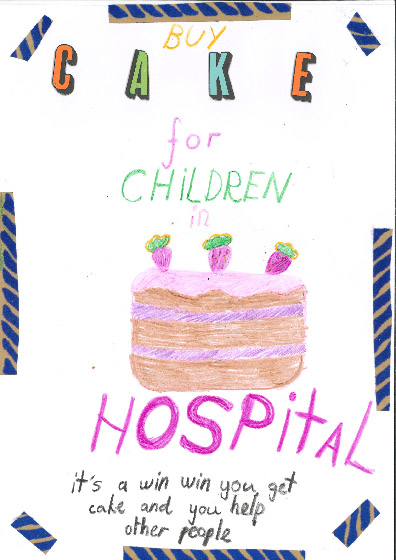In Part 2 of the Hospital Charity takeover, Francesca Vaghi discusses children’s perspectives on charitable fundraising, exploring how meaningful engagement with young people can, and should be developed.

Although interest in children’s participation in public life is prevalent in the humanities, the social sciences, and policy making, children’s perspectives and contributions to the ‘adult world’ often remain unrecognised. This is, in part, because it is common for adults to underestimate children’s awareness and understanding of discourses in the public sphere. Yet, when asking children and young people about their viewpoints in a meaningful way, this is clearly far from the truth.
In Autumn 2023, children and adults were invited to take part in a public engagement activity at the Riverside Museum in Glasgow, inspired by work led by Steph Haydon which explores NHS fundraising campaigns spanning the last one hundred years. We encouraged participants to share their views about charitable fundraising in the NHS by designing their own fundraising posters for imagined campaigns, using drawings and collage. As a childhood researcher, I wondered how we would best make the topic of our public engagement activity intelligible to young participants. Discussing charitable and voluntary intervention in the NHS has been a rich, if sometimes complex, endeavour with adults who have taken part in our research. However, my worries were unwarranted. Given that the NHS is one of the most recognised ‘brands’ in the UK (Stewart 2023: 6–7) and charities, championing various kinds of causes, are embedded in our public imaginary, children are equally exposed as adults to messaging about the NHS and charitable fundraising, for the UK’s health service and generally. As such, they have their own views about this topic and valuing these is important.
Sevasti-Melissa Nolas and colleagues have developed a theoretical and methodological repertoire to understand children’s perspectives and participation in public life, by developing the notion of ‘idioms of childhood’ (Nolas, Aruldoss, & Varvantakis 2019). If children and young people are engaged with meaningfully and on their own terms, it is easy to understand their views about what happens in the public domain and therefore recognise their contributions to it. By developing idioms of childhood as a tool to actively listen to children, Nolas and colleagues encourage us to ‘think about and engage in children’s communication’ to develop a ‘practice of paying adequate attention to children, a disenfranchised group in relation to the public sphere’ (2019: 408). Idioms of childhood may take many forms, including drawings and other visual means (like photographs taken by children).
Children’s posters of imagined fundraising campaigns thus fall within this category. Drawings and collage can be understood as ‘practices of world-making mobilised by children […] to make sense of and communicate their encounters with and experiences of public life’ (Nolas et al. 2019: 399). Charitable appeals supporting the NHS became particularly visible during the COVID-19 pandemic, of which many of our young interlocutors had memories. Some of the posters they made in response to our prompt depicted drawings of people wearing face masks, hand washing instructions, and the NHS logo enveloped by rainbows (a recurring image during the pandemic). Personal experience of the NHS also emerged as a strong theme among participants. We know that gratitude (for care received or given to one’s loved ones) is what often compels the public to donate or fundraise for the NHS (Stewart et al. 2022: 6–7; Stewart 2023: 48). Saying thanks, or ‘giving back to the NHS’, featured prominently in several posters. One girl, for example, wrote about her gratitude for the nurses who cared for her baby brother when he was in hospital: ‘thay [sic] helped a lot he is such a miracle I would go back and say thank you for helping my brother’ (see Image 1).
Fundraising to support NHS staff was a recognisable cause for several participants, especially those who told us they had family members working for the in NHS various roles. One poster reads: ‘I love the NHS. My mumy [sic] is a scientist in the NHS’ (see Image 2).
Some children reflected on the ‘feel good’ element of taking part in charitable activity, a notion that is also prevalent (albeit contested) in wider literature on charity and voluntarism (Rochester et al. 2010; Lindsey et al. 2018: 139). Helping others by buying from a cake sale is described as a win-win situation by a participant (see Image 3).
However, children’s posters, and the conversations they had with us, were not just limited to NHS fundraising. Some incorporated other well-known charitable campaigns into their posters, showing an acute awareness of charitable activity around them. For instance, a few children referred to Macmillan Coffee Mornings (see Image 5), an established initiative across the UK used to raise funds for cancer research. One participant included a drawing of Pudsey Bear in his poster, incorporating another famous charity logo in his imagined NHS fundraising campaign (see Image 4).
The variety of posters and conversations generated during the day confirmed that young people are actively engaging with messaging from charities in the public domain, and some are also already taking part in fundraising. Several participants included suggestions for fundraising events in their posters based on past experience, like bake sales, toy sales, or taking part in sporting events.
Our public engagement event was a small exercise in understanding children’s views of fundraising for healthcare. There is potential for more to be done in this area. Harnessing ‘idioms of childhood’ can spotlight young people’s present perspectives and experiences of charitable fundraising, contributing to larger questions about the role it should play in funding the NHS of the future.
Acknowledgements: I would like to thank Dr Steph Haydon for the guidance provided during the public engagement event held at the Riverside Museum in Glasgow, as part of Explorathon 2023, and for the discussions that helped me shape this reflection. Thanks also to Professor Ellen Stewart for the feedback provided on an earlier draft of this piece.
About the author
Francesca Vaghi is a Research Associate at the University of Glasgow, working on the ‘Border Crossings’ project. Francesca’s recently published book, based on her doctoral research, focuses food policy and practice in the early years.
References
Lindsey, Rose and John Mohan. (2018). Continuity and Change in Voluntary Action: Patterns, Trends and Understandings. Bristol: Policy Press.
Nolas, Sevasti-Melissa, Vinnarasan Aruldoss, and Christos Varvantakis. (2019). Learning to Listen: Exploring the Idioms of Childhood. Sociological Research Online 24(3): 394–413.
Rochester, Colin, Angela Ellis Paine, Steven Howlett, and Meta Zummeck. (2012). Volunteering and Society in the 21st Century. Basingstoke: Palgrave Macmillan.




